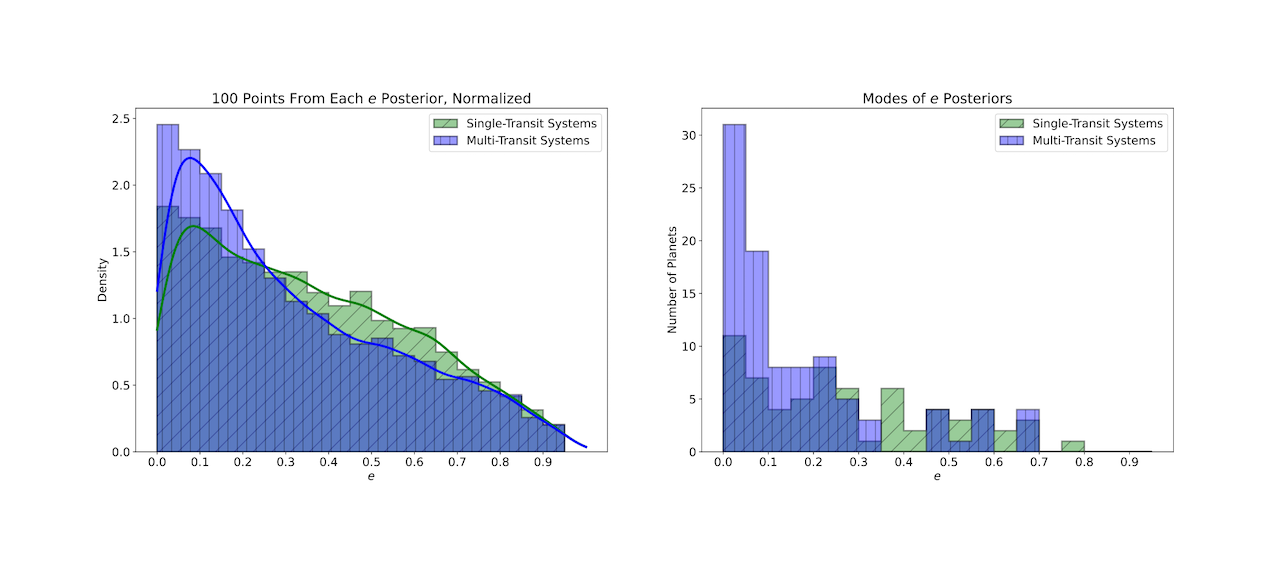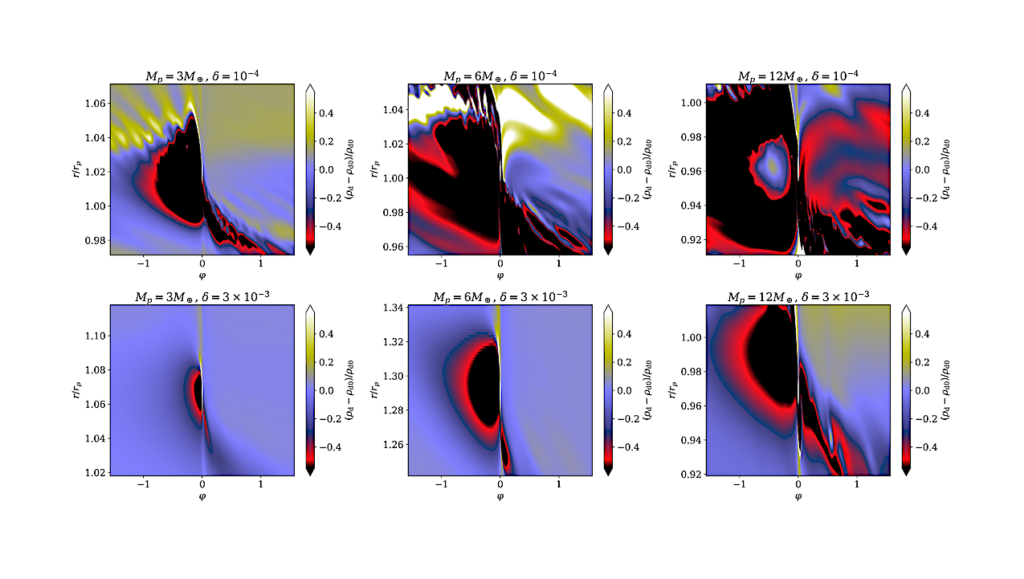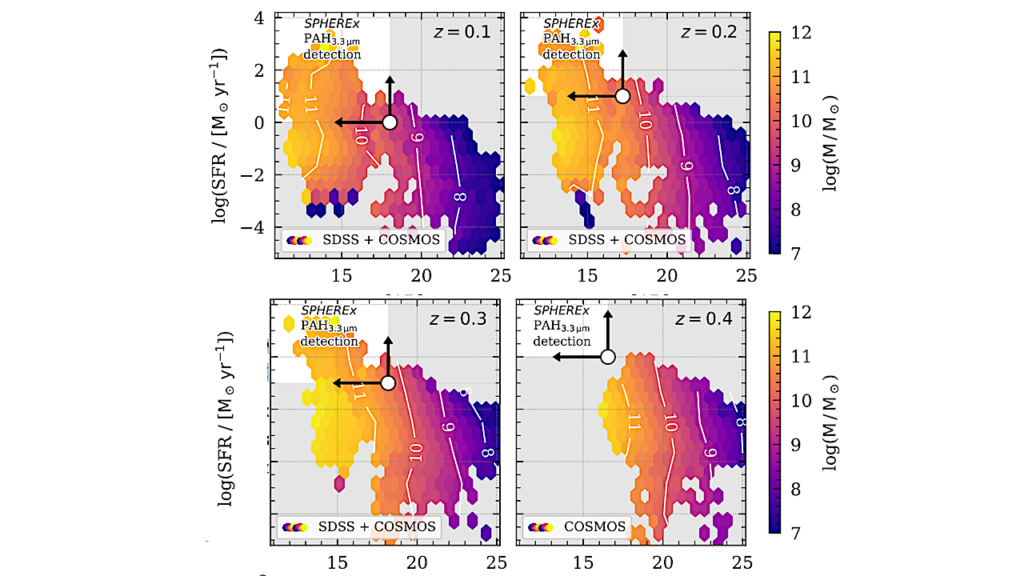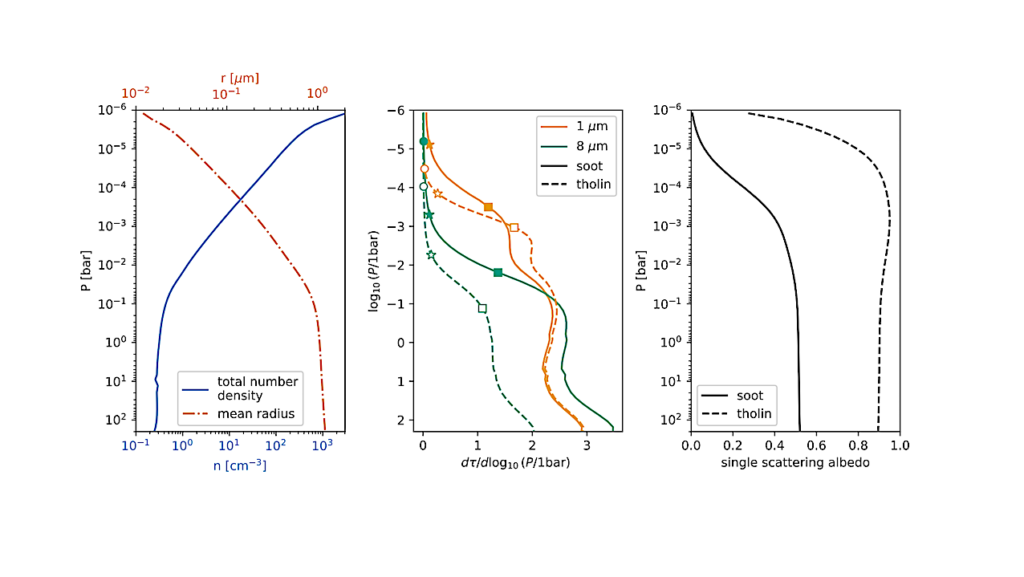The Orbital Eccentricity Distribution of Planets Orbiting M dwarfs

We investigate the underlying distribution of orbital eccentricities for planets around early-to-mid M dwarf host stars. We employ a sample of 163 planets around early- to mid-M dwarfs across 101 systems detected by NASA’s Kepler Mission.
We constrain the orbital eccentricity for each planet by leveraging the Kepler lightcurve together with a stellar density prior, constructed using metallicity from spectroscopy, Ks magnitude from 2MASS, and stellar parallax from Gaia. Within a Bayesian hierarchical framework, we extract the underlying eccentricity distribution, assuming alternately Rayleigh, half-Gaussian, and Beta functions for both single- and multi-transit systems. We describe the eccentricity distribution for apparently single-transiting planetary systems with a Rayleigh distribution with sigma = 0.19 (+0.04, -0.03), and for multi-transit systems with sigma = 0.03 (+0.02, -0.01).
The data suggest the possibility of distinct dynamically warmer and cooler sub-populations within the single-transit distribution: The single-transit data prefer a mixture model composed of two distinct Rayleigh distributions with sigma_1 = 0.02 (+0.11, -0.00) and sigma_2 = 0.24 (+0.20, -0.03) over a single Rayleigh distribution, with 7:1 odds. We contextualize our findings within a planet formation framework, by comparing them to analogous results in the literature for planets orbiting FGK stars. By combining our derived eccentricity distribution with other M dwarf demographic constraints, we estimate the underlying eccentricity distribution for the population of early- to mid-M dwarf planets in the local neighborhood.
Sheila Sagear, Sarah Ballard
Comments: 23 pages, 9 figures, 5 tables. Data and code available at DOI:https://doi.org/10.5281/zenodo.7731019. Accepted to PNAS
Subjects: Earth and Planetary Astrophysics (astro-ph.EP); Solar and Stellar Astrophysics (astro-ph.SR)
Cite as: arXiv:2305.17157 [astro-ph.EP] (or arXiv:2305.17157v1 [astro-ph.EP] for this version)
Submission history
From: Sheila Sagear
[v1] Fri, 26 May 2023 18:00:00 UTC (2,862 KB)
https://arxiv.org/abs/2305.17157
Astrobiology








